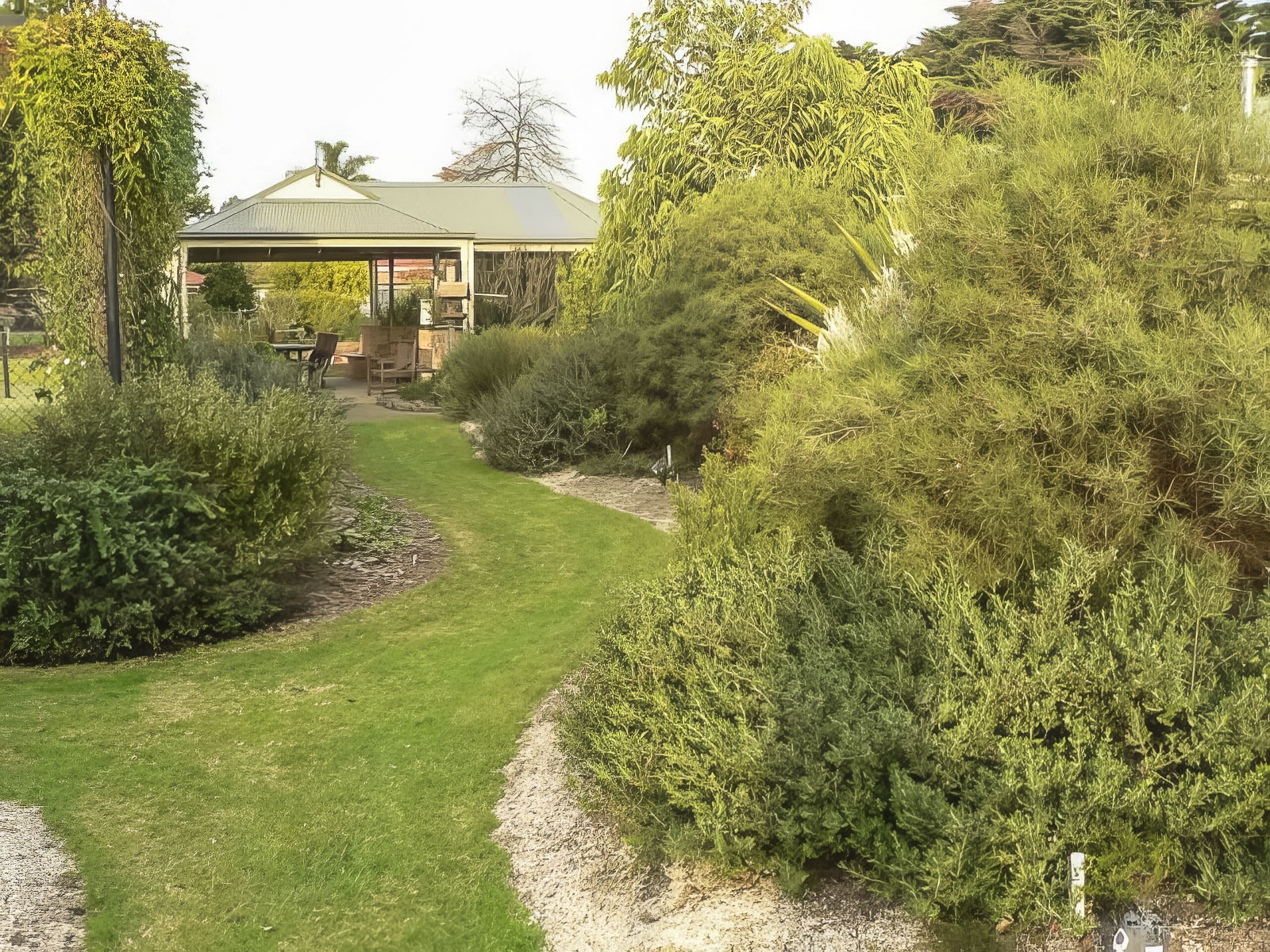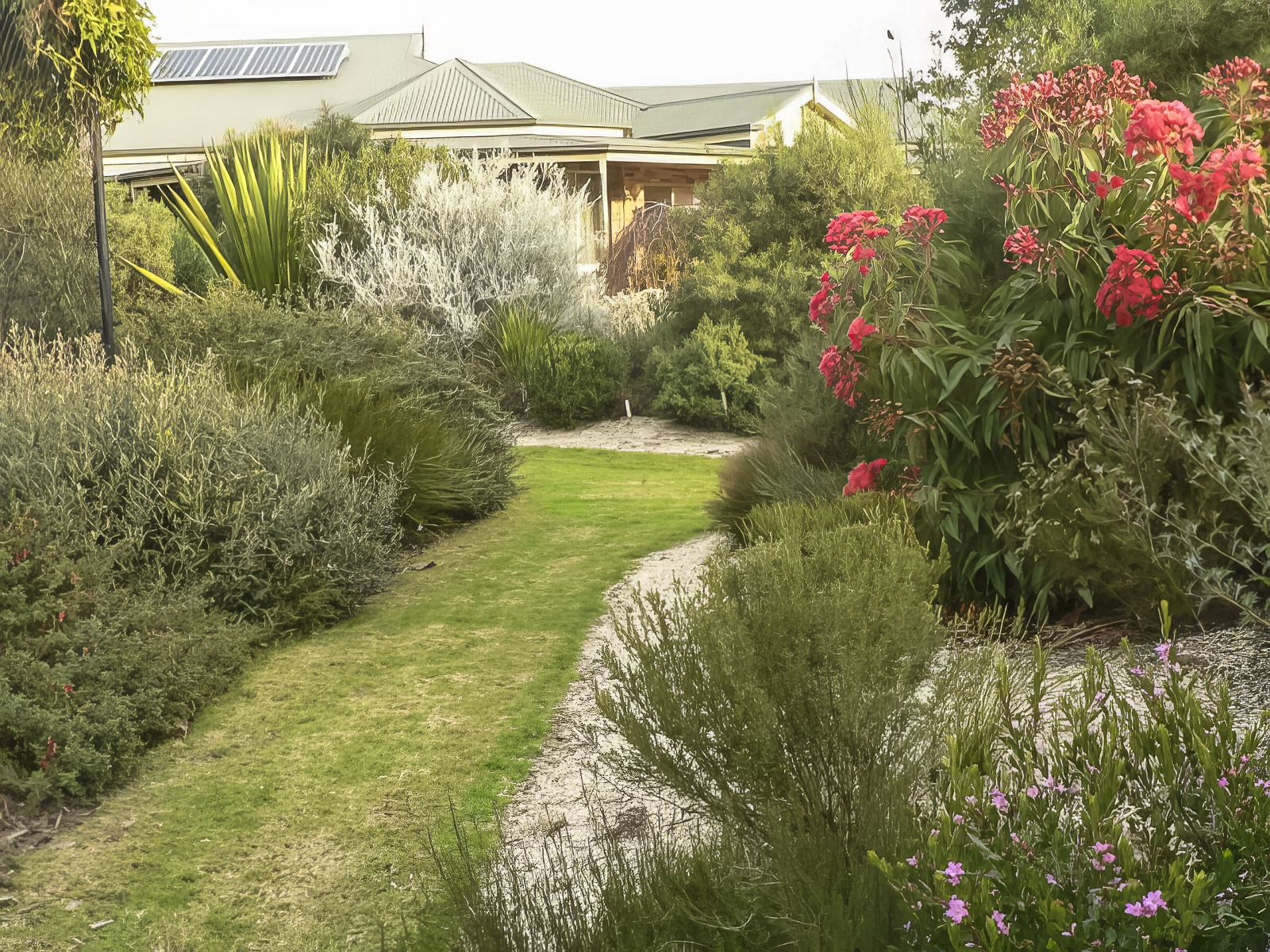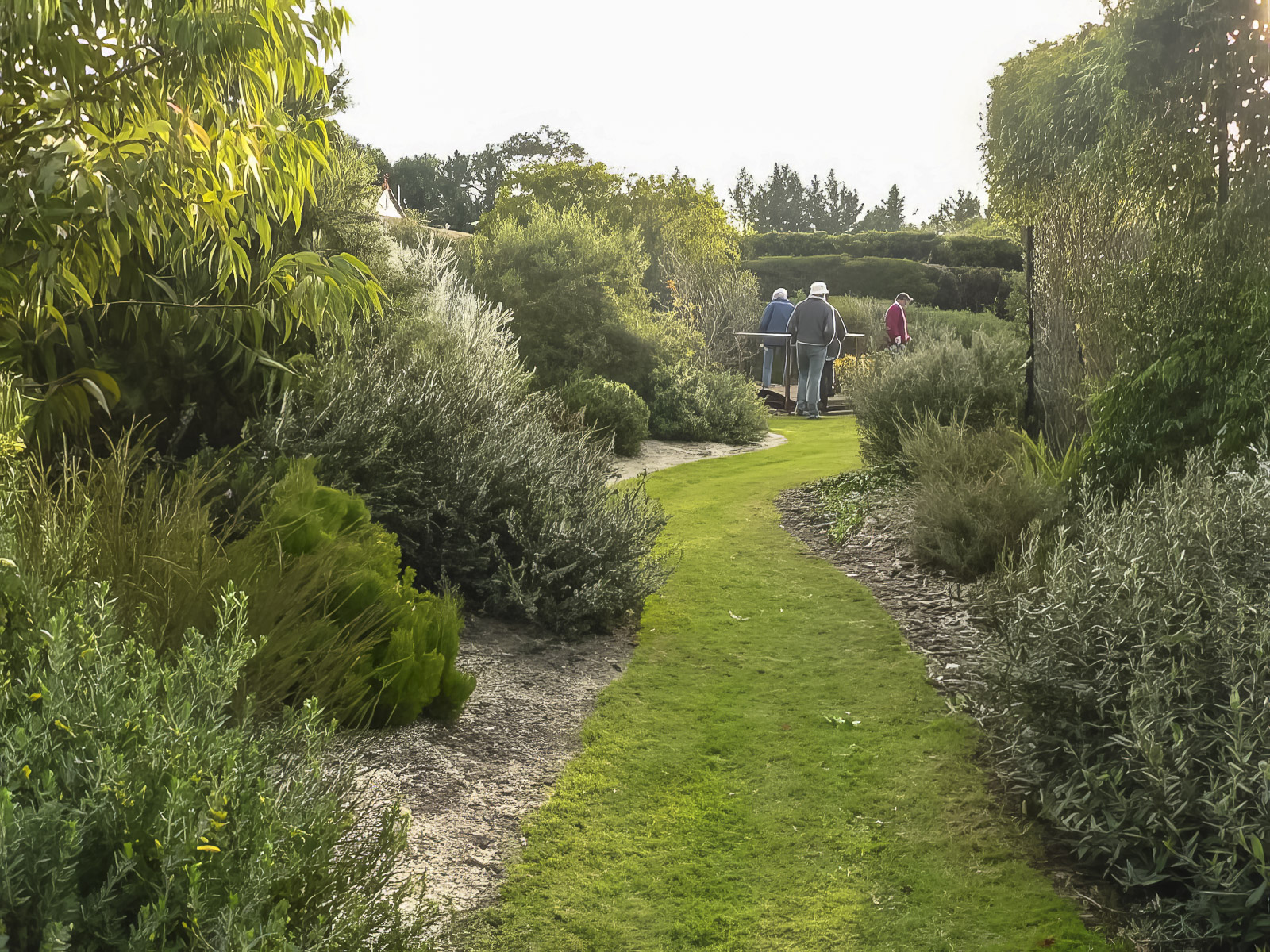Bob and Dot O’Neill have spent 4 years creating a native garden from scratch.
They moved to their current 0.4 ha property just four years ago. Their garden, begun from nothing (actually worse than nothing), is already well established.
The growth of plants has been remarkable, so that the garden now looks twice its age. The amount of work involved in achieving this has been enormous. They have a video recording the progress over the four years!

Soil and aspect – a good location for a native garden
Their soil is good – a fine, grey, sandy loam. The air is clear with no city pollution and the garden is sunny with, as yet, not very much shade. In addition to this (plus all the hard work), as one member said, “much-loved gardens thrive”.
Design approach for starting from scratch
Their garden is a model of practical design. They designed the garden from scratch. First they had about 14 large cypresses (with other similar exotic trees) removed. This was a huge job. They also put a root barrier along one fence to keep unwanted tree roots out.
They removed other plants and structures . In the first year, in an unexpectedly wet period, they lost many plantings and discovered they had a high water table. To improve drainage, they treated this problem in two ways – by using agricultural pipes and by importing 140 cubic metres of soil to build up beds.
To lay out the garden, they marked out beds on the existing lawns with hoses or stakes, then sprayed and re-sprayed theses areas until the grass was completely dead. Grass paths surroun the curved beds. Several thousand plants now grow in the garden. Bob and Dot planted about 200 last summer. Bob has propagated about 90% of these, mostly from cuttings from many sources.

Plants and planting over time
When they do buy a large plant in a pot, they immediately take cuttings, pot the plant on and keep the original plant as a stock-plant. Bob recommends planting at 6-inch-pot size, so roots have developed sufficiently to find water in the soil.
To plant out a new bed, they arrange plants in place, rearrange, then plant. Lawn surrounds many beds, giving more ‘edges’ for small or low-growing plants, with medium shrubs behind and taller shrubs along the centre.
They plant the whole year round, taking particular care over summer months, with both watering and mulching as necessary.
Bob and Dot use tank-water to water plants for their first summer and do all watering by hose (with no sprinklers). They use coarse mulch to a maximum depth of 5cm (2 inches).
Maintenance for good growth and performance
The garden was virtually weed-free. Bob uses a hoe to cut off very small weeds at ground level to minimise large weed disposal. This works for nearly all weeds, though some like oxalis are removed by hand. Dense planting of garden beds also helps minimise weed growth.

A collector’s garden
The O’Neills’ garden is a collectors’ garden. They initially specialised in correas and are growing about 200 different forms, with two of each sort where possible. They keep records of which of the 47 numbered beds each correa is planted in. Bob recommends space and sun for good flowering in correas and eremophilas. For example numerous beautiful forms of C. pulchella were among the correas in flower and Bob has found (as have others) these are generally more reliable than forms of C. reflexa.
Eremophilas are a more recent interest and they grow nearly all of these (including E. nivea) on their own roots. As it was late autumn a relatively small number were in flower.
They are interested in other genera apart from these two. Over 50 epacris plants currently in pots, about seven species of lechenaultia (they have found L. biloba to be the most reliable) and some verticordias.
Many other genera grow in their garden. They cut their Kangaroo Paws back to ground level each year and they too are flourishing.
Bob says the best time to visit their garden is November, when the greatest range of species is in flower.
Then there’s the hothouse where they do all the propagation, two ponds, and a fruit tree and vegetable area. There’s a trellis with Kennedia rubicunda and Hibbertia scandens growing, and a large gazebo in the garden perfect for lunch and afternoon tea.
For information about native gardening in Victoria, see Australian Plants Society Victoria.
 Australian Native Plants Society (Australia)
Australian Native Plants Society (Australia)